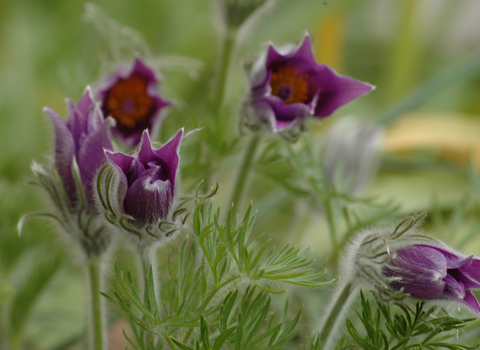
©Anne Tanne
Pasqueflower
The pretty-in-purple Pasqueflower is now a rare plant in the UK, restricted to just a few chalk and limestone grasslands. Steeped in legend, it flowers at Easter, so is known as the 'anemone of Passiontide'.
Enw gwyddonol
Pulsatilla vulgarisPryd i'w gweld
April to AprilTop facts
Categori
Stats
Height: up to 25cmClassified as Vulnerable on the Vascular Plant Red Data List for Great Britain. Priority Species under the UK Post-2010 Biodiversity Framework. Listed as Near Threatened on the global IUCN Red List of Threatened Species.
